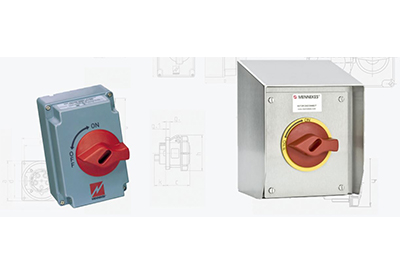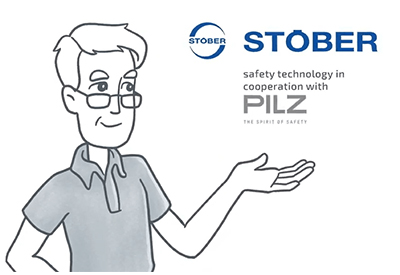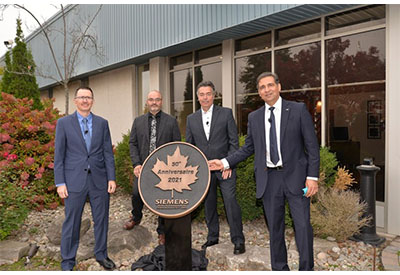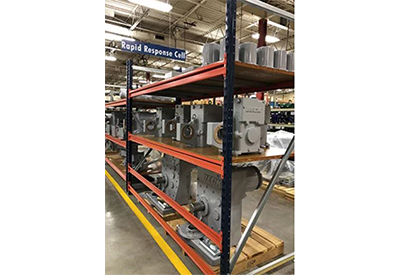Understanding the Options for Motor Disconnect Switches

November 4, 2020
Motor disconnects are more than simple on-off devices to satisfy lockout-tagout requirements. They have become an integral part of the motor control circuit as disconnects increasingly offer control functions, such as auxiliary contact interface, added selector switches and push buttons. Disconnects can be fusible or non-fusible and can have different pole arrangements and environmental ratings. Multiple disconnects can be packed into one enclosure, saving space and cost while allowing you to address varied requirements, including harsh food processing or washdown applications.
The following paper discusses the specification steps you should keep in mind when selecting a motor disconnect, as well as the various electrical, installation and enclosure options that will determine how your disconnect functions in its operating environment.
Specifying Your Disconnect
With all the different motor disconnects on the market, the best choice for your application isn’t always obvious. But if you follow a few simple specification steps, you’ll end up with the right disconnect switch every time.
Evaluate the operating environment. While it’s good to pay attention to the electrical characteristics of a motor disconnect, it’s just as important to carefully evaluate the disconnect’s operating environment—a step that is often overlooked. The operating environment will determine what type of housing material will work best in your plant or on your shop floor.
High-quality motor disconnect switches are available in both metallic and non-metallic. MENNEKES products use UL Listed metallic and non-metallic enclosures, both with a NEMA 4X rating, so they offer watertight protection for harsh environments. Many NEMA 4X enclosures can withstand challenging operating conditions, including those with corrosive chemical exposures and caustic cleaning substances. If both metallic and non-metallic can meet the same NEMA rating, typically the manufacturing environment will make the choice clear.
Where stainless steel shines. Stainless steel and other metallic enclosures are increasingly favored in areas with the potential for direct food contact. One reason involves stainless steel’s tolerance of repeated washdown cycles. The other reason is that food processors prefer metallic enclosures in production line areas since metal detection systems can pick up foreign matter if there is breakage. Metallic enclosures also have better impact resistance, so high-traffic and end-of-line applications in packaging, manufacturing and pharmaceutical facilities often use stainless enclosures.
High-performance polymers. The vast majority of motor disconnect applications are well served by disconnects with a non-metallic enclosure. These polymer housings have a lot going for them. Non-metallic housings generally cost less than a comparable metallic housing. Nonmetallics also cost less to install—in part because they are easier to punch and rough-in for fittings and conduit than metallic boxes. Unless you need stainless for a specific food processing area or for impact resistance, polymer housings will likely offer all the performance you need for less money.
Keep in mind, however, that not all non-metallic disconnect switches are created equal. While a NEMA 4X disconnect has a watertight rating, the type of polymer used for the enclosure has significant performance consequences especially when it comes to chemical, weather, flame and impact resistance. We make all our enclosures from a very high-performance polymer that is UV stabilized and has a UL 94 -5V flame rating. Our UL Listed enclosures indicate that they have passed rigorous impact and conduit bending tests.
Determining A Disconnect’s Electrical Design
Open any catalog of motor disconnect switches, and you may be overwhelmed by all the different electrical options. Does your disconnect need to be fusible? Is it a 1Ø or 3Ø switch requirement? What HP and voltage are needed? Do you need an installed pilot device? The list could go on and on—and for good reason. Nowadays, motor disconnects increasingly have to meet challenging electrical or installation requirements, and in many cases, you may need a specialized switch to meet those requirements.
As you configure your disconnect, it’s important to keep the following electrical options in mind:
- • Fusible or non-fusible. Your application will likely determine if the switch should be a fusible or non-fusible type. Fusible switches have a fuse provision in the switch and enclosure assembly, enabling you to open and close the circuit while providing overcurrent protection. Non-fusible switches do not have an integral fuse option and provide no circuit protection. Quite simply, does your need require fuse protection at the switch, or is there upstream protection to eliminate this need at the switch? MENNEKES offers both nonfusible UL508 or fusible UL98 disconnects.
- • Pole and throw options. Is the voltage requirement 1Ø or 3Ø? This will determine the number of poles to match the voltage configuration and related HP rating. Most industrial requirements use 3 pole switches, but MENNEKES also stocks 6 pole disconnects in both non-metallic and stainless enclosures. These are a perfect disconnect means for two-speed or reversing motors. Off-the-shelf availability and compact size makes them especially useful for motor control applications. As an added option, we offer 6 pole double throw disconnects with a center OFF position to transfer loads from one power source to another.
- • Pilot device. Do you need a pilot device as well as a disconnect in the same enclosure? Normally a separate enclosure is required to mount these devices. With MENNEKES disconnects, you can customize your disconnect and add a pushbutton, selector switch or pilot light in the same enclosure. We stock many 22.5 mm and 30 mm pilot devices, or we can assemble to your specifications.
Enclosure Options Save Time, Space And Cost
When it comes to housing your electrical devices, the more installation and design options you have, the better. Some of the key enclosure options include:
- • Extra space. A little extra space in the box can make it faster and easier to install. MENNEKES stocks many disconnects in an extra-large enclosure. This also allows for factory installed or on-site customizations.
- • Material options. Disconnect enclosures come in both metallic and non-metallic versions. Both have their advantages. Metallic boxes maximize the impact resistance for high-traffic and endof-line applications in packaging, manufacturing and pharmaceutical facilities, while non-metallic enclosures generally have a lower installed cost and increased customization options. Our non-metallic AMAXX products, for example, let you freely combine multiple disconnects and related devices in a single enclosure, saving time, installation cost and space.
- • Environmental resistance. The type of enclosure will also determine which operating environments the disconnect can tolerate. Most food processing or washdown applications require Type 4X watertight enclosures capable of withstanding cleaning agents. Our sloped-top stainless enclosures provide this protection and shed liquids and contaminants.
Motor Disconnects For VFD Applications
In the right applications, variable frequency drives (VFD) will improve the control and reduce the energy costs of your AC motor-driven equipment. To install a VFD safely, however, you may need to reconsider the type of motor disconnect you use. The traditional knife-blade style of disconnect, while compliant with the National Electrical Code (NEC), is not the best choice for modern VFD applications. The reasons why are both physical and electrical.
From a physical standpoint, the traditional NEMA-style blade disconnects are too bulky for IEC installations, which often group or combine motor controls and disconnects in a shared enclosure or in limited spaces. In these applications, the best alternative is a compact rotary disconnect. The use of rotary disconnects, in nonmetallic or stainless steel enclosures, continues to grow in popularity as more and more machine builders and OEMs adopt IEC devices.
From an electrical standpoint, VFDs require motor disconnects with an auxiliary contact that can provide crucial early break functionality. This contact signals the drive before disconnecting the motor, giving the drive time to power down in a controlled manner before the mains open. Plenty of disconnects, both blade- and rotarystyle, offer an auxiliary contact. But disconnects are not all created equal when it comes to protecting expensive VFDs.
For one thing, auxiliary contacts have speed differences based on their actuation methods. Cam actuated versions provide fast and predictable early break switching. Our onboard cam-actuated auxiliary contacts will provide a minimum, repeatable time gap of 20 ms between the opening of the auxiliary and the opening of the mains. This repeatability and speed provide an advantage over conventional auxiliary contacts with mechanical linkages whose actuation speeds can vary based on how slow or fast the switch handle is operated.
For another thing, auxiliary contacts aren’t always included in the price of the base disconnect. In our case, auxiliary contacts are included as a standard feature. Both auxiliary contacts and early break capability can be options with other manufacturers at an added cost.







